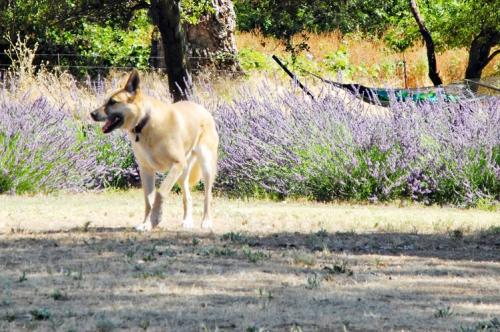Dogs are curious creatures that sniff everything. showing interest. Dogs are often even interested in insects, they examine them, sniff them and, of course, get a quick response reaction! Therefore, many insect bites occur precisely on dogs nose.

Insects sting parts of the body such as eyes, ears and legs. When the dog walks along the anthill or disturb the hornet’s nest or bee a hive, a swarm of insects can attack her whole body. But even a bite of such solitary insects, like spiders, can be very nasty.
Bites of bees, wasps, hornets, spiders and ants can be a problem for any curious dog. The poison of these insects causes various problems ranging from mild irritation to severe anaphylactic shock. Supervisory Pet Owners can minimize reaction by taking prompt action. But, keep in mind that severe cases require immediate medical care.
What to do if a dog is bitten by an insect?
- It is important to quickly determine if the dog is bitten or stung. If the dog suddenly began to scratch its face, nibble on her legs or any part of her body begins to swell, then you can assume that she was bitten by an insect.
- Identify an insect. Look around maybe there are many flying or crawling insects around.
- In case of bee stings, look at the sting. Bees are the only insects that leave their stings in their victims. These left stings continue to secrete poison, therefore their removal reduces the maximum possible amount of poison that can get a dog. You can remove the sting with a simple credit card, just a few times going over its edge on pet hair. Do not use tweezers as you may squeeze even more poison. Fortunately other flying insects (wasps and hornets) do not leave their stings in the bite.
- Calm the bite spot. Make a thick paste from baking soda and water and apply it to a bite.
- Minimize swelling. Put ice in place bite for 10 minutes to reduce swelling. In case of extensive bites A cold, damp towel is best.
- Prevent an allergic reaction. Give the dog a small dose of antihistamine (e.g. diphenhydramine) to minimize reaction and reduce itching. Consult your the veterinarian about the dosage appropriate for your pet.
- Reduce the trauma of combing. If the dog continues to lick or scratch the bite site, then use special cone collar. Constant brushing will result in delayed healing and increase the likelihood of infection.
- Maintain your dog’s water and food intake. Give the dog fresh water. Dogs that have been stung in the mouth often It’s difficult to eat dry food, so it can be softened with warm water.
When is an insect bite a serious danger?
Like some people, many dogs suffer from allergies. (hypersensitivity) to insect bites. The level of reaction depends from the dog’s immune system and insect species. Allergic reaction usually appears within 20 minutes after a bite, but can sometimes only happen in a few hours, so careful observing a dog is often critical.
Severe reactions (anaphylaxis) can be fatal, therefore the speed of your actions is again crucial.
Your dog will need an ambulance at first signs:
- Severe swelling of the head and neck, which may make breathing difficult. Edema of these places can occur even if the bite was elsewhere.
- Shortness of breath or shortness of breath. Some dogs may suffocate more than usual because the tumor located in the respiratory tract. Do not try to find out the reason show the dog to the vet immediately.
- Excessive salivation. If the edema is in throat, then the dog may have difficulty swallowing saliva and lets her out.
- Excessive agitation. Some dogs become restless due to severe itching and shortness of breath. In addition, insect venom can affect their nervous system.
- Vomiting or diarrhea. Even mild vomiting and soft stools can indicate serious problems.
- Dizziness or disorientation. If your the dog stumbles or exhibits unusual behavior then this may be a sign of an anaphylactic reaction.
- Cramps. Do not hesitate and call to the doctor.
Medication can save your dog’s life, it aims to reduce allergic reactions and prevent shock. In addition to antihistamines, a veterinarian can give Your dog has corticosteroids or epinephrine. Maybe a dog hospitalization and connection to a dropper, and also blood and urine tests. Duration of hospital stay depends on reaction your dog for therapy, but usually this doesn’t require less than 1-2 days.
Your goal should not be to suppress the curious your dog’s character, but be prepared for possible consequences. This means that you must act quickly in case she strongly reacts to an insect bite.






